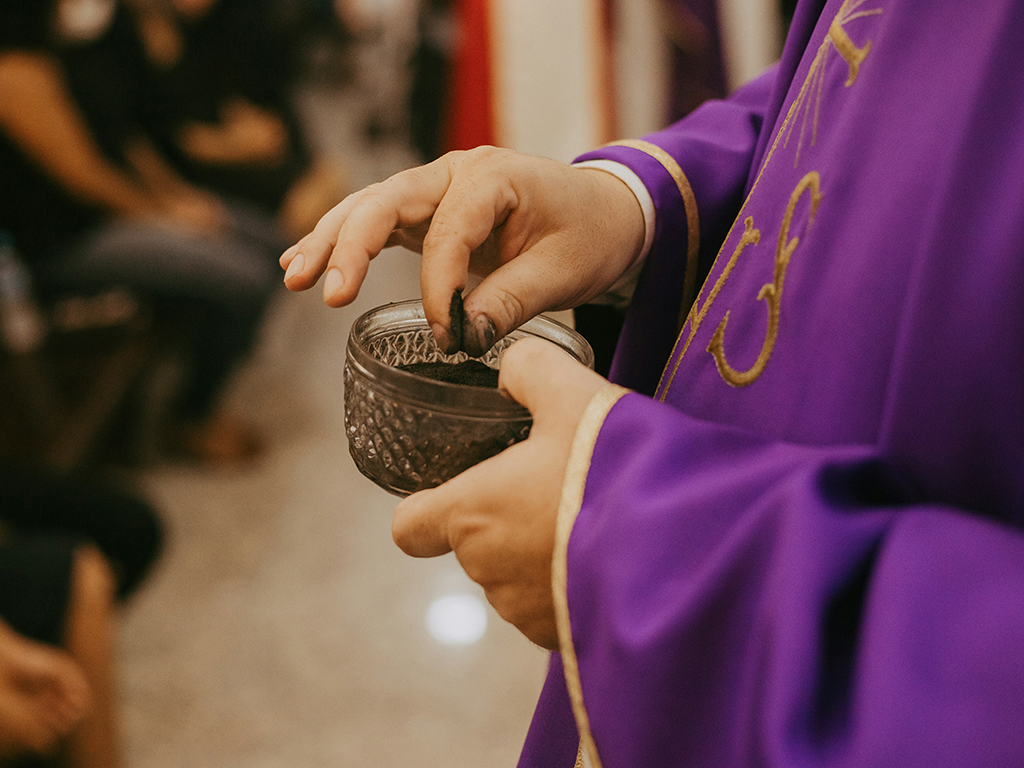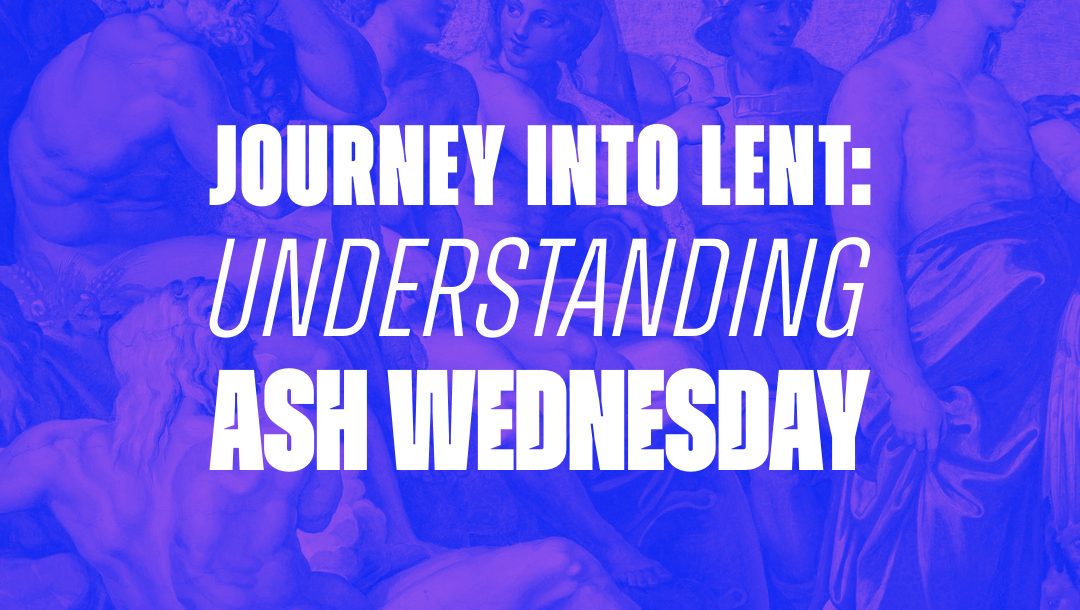Ash Wednesday is the beginning of Lent, a period of introspection and preparation leading up to Easter.
On Ash Wednesday, the ritual of applying ashes is observed – a solemn reminder of mortality and a call to repentance. In churches around the world, clergy and laity administer ashes in the form of a cross on the foreheads of the faithful, signifying both the fragility of life and the hope of resurrection.
This guide endeavors not only to inform but also to encourage all practitioners to embrace this time of Lent with purpose and renewal.
Throughout the following sections, we will delve deeper into the profound meaning of Ash Wednesday and explore a wide array of related topics, including:
- What Is Ash Wednesday? An explanation of the day’s meaning and its role within the Lenten season.
- Origins of Ash Wednesday: A brief overview of the historical and religious genesis of this observance and its evolution over time.
- Fasting and Abstinence on Ash Wednesday and Lent: Guidelines and customary practices pertaining to the fast, answering common questions like “Do I have to fast on Ash Wednesday?”
- What is the significance of Ash Wednesday and the color purple?
Understanding the “Rules” of Ash Wednesday
Ash Wednesday isn’t just a date on the calendar; it’s a day with a set of rules and observances. Central to these rules are practices of fasting, abstinence, and the imposition of ashes. According to the Roman Catholic Church, Ash Wednesday is a day of both fasting and abstinence. This means that Catholics over the age of 14 are obliged to abstain from meat, and those between the ages of 18 and 59 should also fast, which typically involves eating only one full meal or two smaller meals with no snacks.
Fasting, in the Christian context, isn’t a mere dietary restriction but a form of self-discipline. It’s about redirecting focus from the physical to the spiritual; a sacrifice that mirrors the forty days Jesus spent fasting in the desert wrestling with temptation.
On this solemn day, the liturgical color is violet, a somber hue commemorating the time of penance. It reminds us that Lent is a season of repentance—a visible sign even in the priest’s garments.

Ash Wednesday Fasting: The Physical and Spiritual Detox
The act of fasting is not exclusive to Ash Wednesday; it’s a practice found across different cultures and is significant in various religions. For Christians, fasting is a way to cleanse the body as a temple of the Holy Spirit, showing humility before God and understanding Christ’s sacrifice to overcome spiritual obstacles.
The spiritual effect of fasting can be profound, as it offers a clear mind and heightened focus with physical detoxification mirroring a spiritual detox. For the health enthusiasts among us, this can be the religious inspiration to begin that detox program you’ve been postponing.
Ash Wednesday Meets Valentine’s Day: 2024’s Special Duo
In an interesting twist of the calendar, Ash Wednesday coincides with Valentine’s Day in 2024, creating a peculiar overlap between a time of penance and a day celebrating romantic love. A friend of mine, who is a priest, humorously pointed out the dilemma this poses for many. He suggested that all married couples, since they are married, should celebrate Ash Wednesday. Singles can celebrate St. Valentine’s Day. But joking aside, Ash Wednesday and Lent provide a wonderful opportunity for everyone to draw closer to God and to one another. Many people choose to give up TV or their mobile phones during this time in order to spend more quality time with their loved ones. This is just one of the many ways that Lent can serve as a time for renewal and strengthening relationships.
As we dive deeper into understanding Ash Wednesday, let us remember that it is not just an imposition of ashes or following certain rules. It is a call to reflect on our lives and recommit ourselves to growth in faith, hope, and love. May this be a time of encouragement and empowerment as we journey towards Easter Sunday.

Lenten Traditions and Practices
Beyond fasting and ashes, the season of Lent brings forth several other traditions and practices. Almsgiving, or charitable giving, is widely encouraged as a Lenten discipline. The period of Lent invites believers to share their blessings with those in need, recognizing that the earthly wealth we amass is but dust, and naked we shall return. Almsgiving stimulates a reversal of hoarding, rooted in the knowledge that our true riches lie in the kingdom to come.
Moreover, there’s an array of additional spiritual practices that can enrich Lent—including prayer, attending daily Mass, reading the Bible, meditation on the Passion of Christ, and participating in the sacrament of Reconciliation. Take a look at this incredible prayer app/website iBreviary.

The Significance of Ash Wednesday and the Ashes
Ashes, as a symbol, echo back to the Old Testament, where they represented dust, a sign of repentance and mourning. They were used in various instances, such as the marking of sinners (Jonah 3:5-9), as a sign of purification (Numbers 19:9, 17), and as a symbol of wasted desires (Isaiah 58:5). This tangible and ancient representation of mortality serves as a stark and humbling visual reminder that from dust we came and to dust we shall return.
In the contemporary Christian context, the ritual of receiving ashes indicates a willingness to turn from sin, to embrace the Gospel, and to journey with Christ to the cross. The words spoken by the minister while imposing the ashes, “Repent, and believe in the Gospel,” or “Remember that you are dust, and to dust you shall return,” underscore this commitment to spiritual renewal and transformation.
Is Ash Wednesday a Holy Day of Obligation?
Ash Wednesday, unlike other significant days in the Christian calendar, is not a Holy Day of Obligation. However, it is widely honored and observed, with many Christian denominations holding special services for the imposition of ashes.
For Catholics, while not a Holy Day of Obligation, Ash Wednesday begins a period of intense prayer and reflection, and the faithful are encouraged to attend Mass on this day. It sets the tone for the rest of Lent, establishing a sense of commitment to the upcoming spiritual journey.

The Origins and History of Ash Wednesday
The exact origins of Ash Wednesday are difficult to trace, but it is clear that by the 4th century, the practice of marking believers with ashes existed in the church. The practice gained universal acceptance by the 11th century.
Ash Wednesday falls forty-six days before Easter, not counting Sundays, a period that mirrors Christ’s forty days in the desert. In the early church, public penitents would wear sackcloth and fast during this period, culminating in their reconciliation on Maundy Thursday in preparation for Easter. This liturgical season is a wellspring of history and tradition, the significance of which grows richer with each passing year.

Embracing the Journey of Lent
As we prepare to mark Ash Wednesday in 2024, let us approach this sacred day with reverence. Let the ashes we receive be a seal of the commitment we make to repentance and transformation. May our fasting and abstinence bring us closer to God and deepen our appreciation for Christ’s sacrifice. Let us engage in Lenten practices wholeheartedly, with the knowledge that they are not mere obligations but pathways to spiritual growth and renewal. Take a look at this cool video by Father Mike how to prepare for Lent.
Ash Wednesday signifies the start of a season that calls us to lay down the temporal for the eternal, the superficial for the substantial, and the fleeting for the everlasting. It is an invitation to journey into the desert of our own hearts, to face our personal Gethsemanes, and to finally emerge, purified and renewed, in the light of Easter.

The Origin of Saint Valentine’s Day
St. Valentine, though shrouded in the mists of time and legend, is traditionally honored as the patron saint of lovers. Historical records suggest that Valentine was a priest who served during the third century in Rome, when Emperor Claudius II decreed that single men made better soldiers and thus outlawed marriage for young men. Valentine, recognizing the injustice of the decree, defied Claudius and continued to perform marriages for young lovers in secret. When his defiance was discovered, Claudius ordered that Valentine be put to death. Over time, St. Valentine became associated with the notion of enduring love, and February 14th purportedly marks the date of his martyrdom—a day now enshrined as Valentine’s Day, celebrating love and companionship around the world. You can check out this great podcast of the Saints, The Merry Beggars on St. Valentine.
Go and love, but always remember that we are loved first by the one who gives us life.




